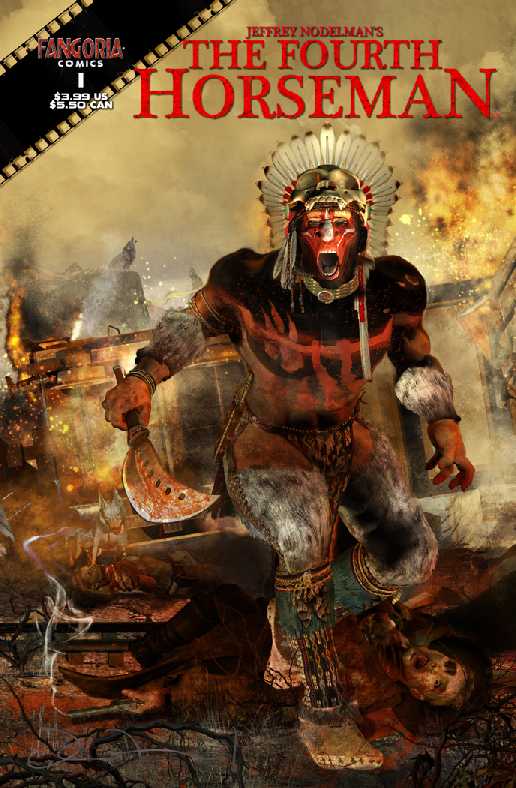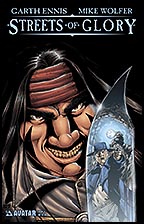Reel Injun cuts through clichés
By Craig Takeuchi
What’s interesting is that Hollywood’s initial attempts to portray Natives as heroes bombed at the Depression-era box office. “They [Hollywood] needed to justify what happened in the Wild West,” Diamond theorizes. “They couldn’t really look at their past and feel good about it if they told the real story of what happened in the West, taking over the continent and stuff. So they needed John Wayne to come in and make them all feel good about it.”
But the related point--how impressive it was for Cree kids to see one of their own on the screen--is interesting. Even though Diamond doesn't say more about it, you can imagine its having a profound effect on the kids' self-image. In some cases it could be a life-changing event.
Hollywood's ups and downs
The second point is the really interesting one. I haven't studied the history of Hollywood Indians in depth, but it doesn't seem to have gone in a straight line.
For the first couple of decades, Hollywood undertook a lot of stereotypical but sincere efforts to romanticize and ennoble Indians. Some even had real Indians in front of or behind the cameras. They portrayed brave warriors and beautiful maidens who fought for their dignity and honor and died tragically.
For the next few decades, Hollywood produced the classic Westerns associated with John Wayne. No longer were Indians portrayed as noble savages. They were simply savages: predatory beasts who circled the wagon trains and tried to kill everyone.
From the mid-1950s on Hollywood made a gradual transition to portraying Indians as full-fledged human beings. The stereotypes lessened and the complexities grew. This culminated in the breakthrough trio of Dances with Wolves, Pocahontas, and Smoke Signals--the three Native movies that everyone still talks about.
And in the 2000s I'd argue that Native portrayals have plateaued. We're seeing a lot of good work among independent filmmakers such as Atanarjuat, Imprint, and Four Sheet to the Wind. And a lot of high-minded specials such as Dreamkeeper, Into the West, and We Shall Remain.
But we're also seeing a return to the stereotypes of the past in movies such as Apocalypto, Comanche Moon, and Indiana Jones and the Kingdom of the Crystal Skulls. And a lot of bogus casting choices such as Johnny Depp, Taylor Lautner, and Lynn Collins.
The early years
Why the ups and downs? Diamond theorizes that positive Native portrayals fell out of favor and stopped making money. Maybe so, but if this happened, why? What's the explanation behind the explanation?
For starters, talking about whether the movies made money seems superficial at best. Hollywood made positive Native movies for 10 or 20 years, then negative Native movies for 20 or 30 years, then somewhat positive Native movies again. Each kind of movie presumably made money for years before it stopped making money. Therefore, something besides the movies themselves caused the shifts in emphasis.
It could be that audiences just got bored, but I bet there was more to it than that. In the early years of the 20th century, Americans were still lamenting the "vanishing Indians." (The ones we caused to "vanish" by killing them.) Wild West shows continued to be popular throughout this period. Geronimo became a folk hero. Professional and college teams chose Indians as mascots.
So what changed? Well, the heyday of classic Westerns corresponded with the rise of the USSR, the Depression, Nazism and World War II, and the Cold War. In other words, America was going through a bad period. Perhaps we felt so insecure that we needed someone to lash out against. Someone we could beat and kill to make us feel good about ourselves.
Killing Commies, Nazis, and Japs wasn't enough, so we gratified ourselves with killing fictional redskins. One faceless horde of barbaric savages substituted for another. War heroes and Western heroes, such as those John Wayne played, became interchangeable examples of American greatness.
Into the modern era
Similarly, we could chart the last half of the 20th century:
Even that's probably way too simplistic. We should look for more specific triggers. For instance, the Reagan era may have coincided with a backlash against Alcatraz, Wounded Knee II, and other instances of Native activism.
The Bush era definitely coincided with the expansion of Indian gaming and the backlash against it. You didn't see it in the decade's movies, but many Native-themed TV shows featured gaming-related plots. And those that didn't often featured business-related corruption, a similar idea.
It's impossible to prove, but I suspect this backlash has had an effect on movies too. In the 1960s and '70s, Indians were oppressed underdogs. In the 2000s, they were greedy casino owners. That had to affect people's thinking.
Studio execs surely felt the same way as Americans overall. So in the first era, they greenlighted Little Big Man and Billy Jack. In the second era, they greenlighted Pirates of the Caribbean and The Ruins. Each era's movies would be inconceivable in the other era.
Same with comic books or any other popular medium. In the first era, Wyatt Wingfoot, the X-Men and New Mutants, and Alpha Flight. In the second era, THE FOURTH HORSEMAN, STREETS OF GLORY, and SCALPED.
Conclusion
I don't know if this analysis is totally right, but it isn't totally wrong. I'd say it shows the complex interplay between political, social, and cultural forces. Between Native lives, Native entertainment, and Native stereotypes.
That's why I laugh when
With Obama as president and change in the air, it should be a good decade for Native-themed entertainment. Let's hope so.
For more on the subject, see The Best Indian Movies.
Below: Progressive era:


Regressive era:



I don't think you can so easily tie movie eras with Presidential/political eras. Any sort of correlation might just be coincidental.
ReplyDeleteIf the movies during Reagan were so conservative, how come the era is most famous, film wise, for the Reagan-era sex comedies like Porky's?
And lets check this statement:
"Reagan era => fewer good Native movies.1990s => Clinton era => Dances with Wolves, Pocahontas, and Smoke Signals.2000s"
Bill Clinton was elected in 1992, two full years after "Dances with Wolves" was released. The movie itself, while filed during the first Bush administration (tail end of the Reagan years, really) was started during the actual Reagan administration. No way can this be called a Clinton-era movie.
"With Obama as president and change in the air, it should be a good decade for Native-themed entertainment. Let's hope so."
Or maybe the next conservative administration will produce the next "Dances with Wolves"....
Personally, I wish that "Dances With Wolves" would stop being the pinnacle Native film. First off, it's status quo -- white man centric. It's a story about a white man who befriends some Indians, then leaves town with the only white woman in the village. The same goes for most films that try to be socially conscious and fail. However, "Smoke Signal" remains one of my favorite films. Hollywood is forever going to be bowing to the masses with films that reach the greatest number of fans and movie-goers because that's what makes the most money.
ReplyDeleteHopefully, given the amount of Native centric film festivals and the growing number of Native artists with talent, resources and exposure, there will be change.
This theory is really just a theory, DMarks. I don't plan to push it like some of my other theories (e.g., racism in Hollywood). ;-)
ReplyDeleteSex comedies in the Reagan era? Don't get me started about the conservatives' hypocrisy toward sex and violence. About how they like to trumpet "family values" from the pulpit while sinning in the aisles.
I knew someone, probably you, would object to including Dances with Wolves in the Clinton era. Sigh.
I say Bush Sr.'s recession, his declining poll numbers, the explicit talk of "culture wars," the beginning of the dot-com boom, and other factors made the entire decade the "Clinton era." Clinton's election in 1992 was the culmination of a swing away from Reagan-era politics, not the start of it.
Nor is this an uncommon claim. Search for "1990s Clinton era" and you'll find many postings equating the Clinton years with the entire decade, not just 1992-2000. For instance:
http://edhelper.com/ReadingComprehension_54_247.html
http://www.boston.com/news/nation/articles/2008/10/10/in_shift_obama_lauds_clinton_era/
http://www.usatoday.com/news/washington/2009-04-23-cops-program_N.htm